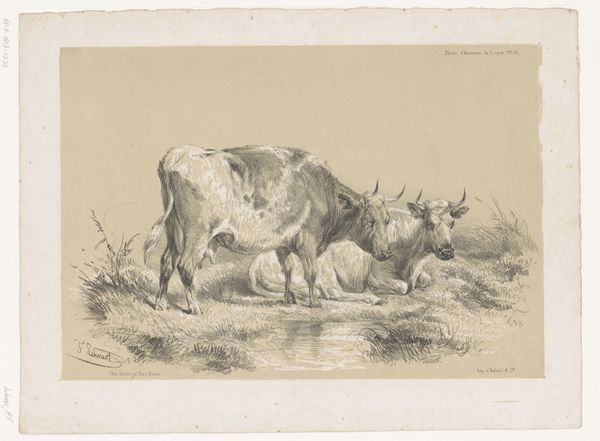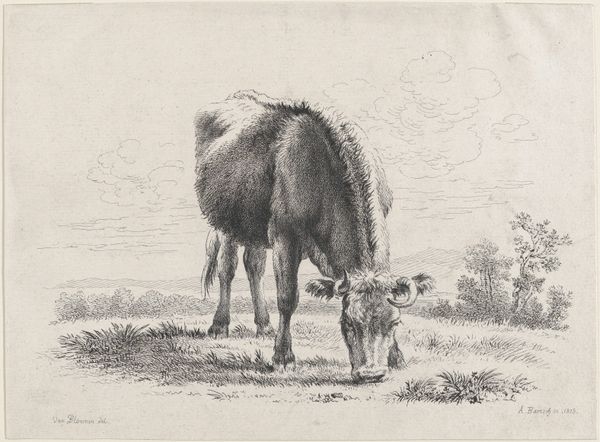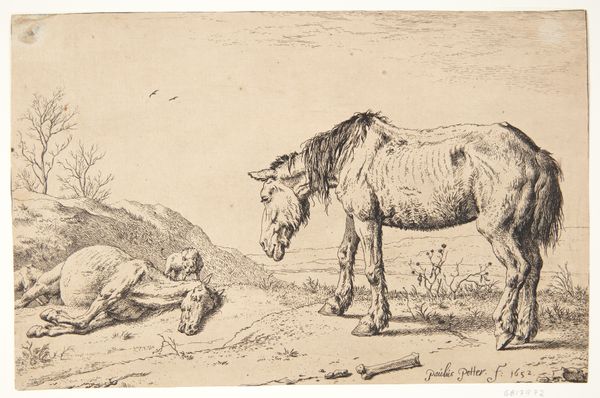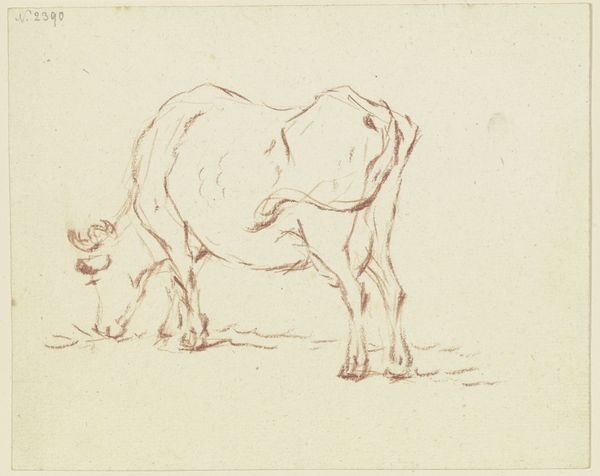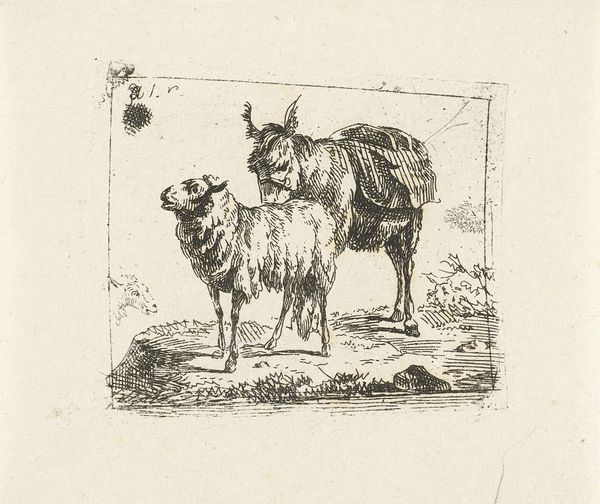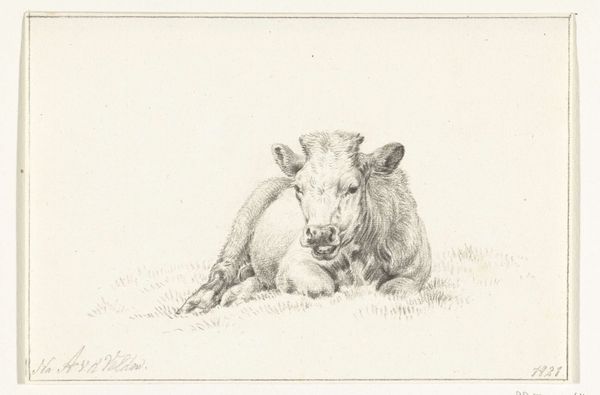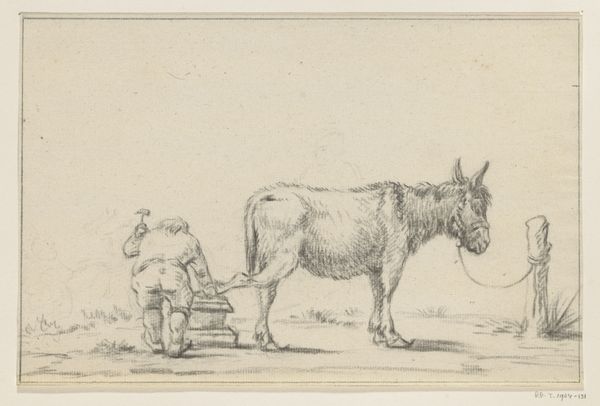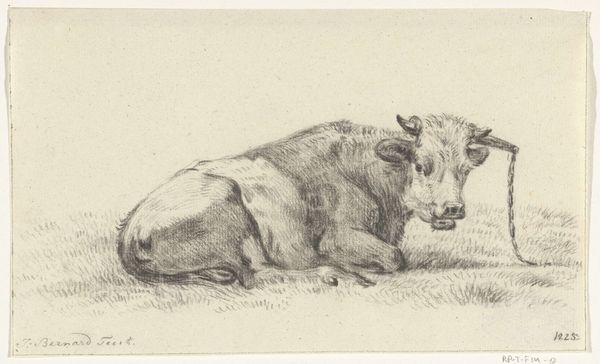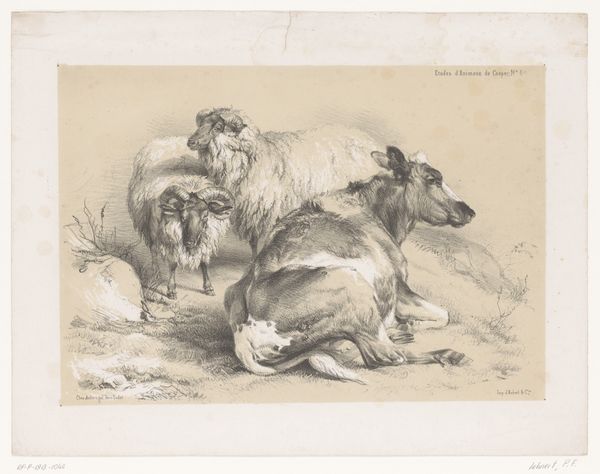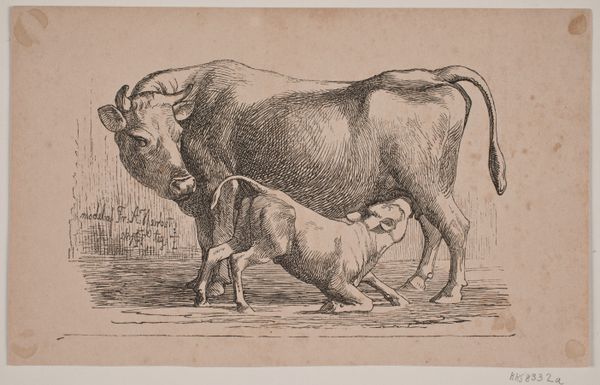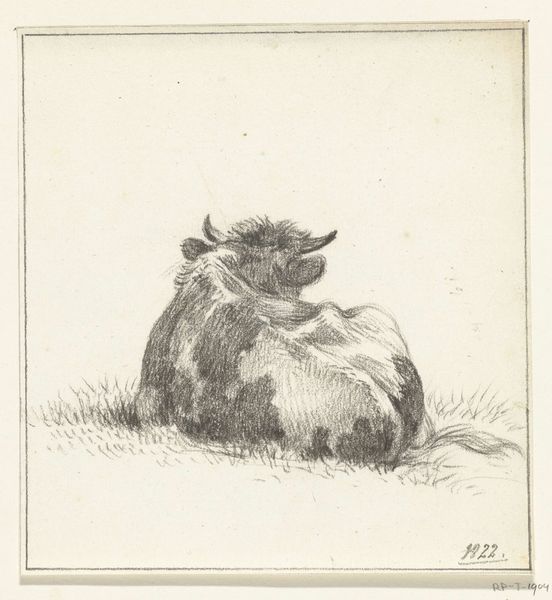
#
toned paper
#
light pencil work
#
pencil sketch
#
etching
#
personal sketchbook
#
pen-ink sketch
#
sketchbook drawing
#
watercolour illustration
#
sketchbook art
#
watercolor
Dimensions: height 72 mm, width 77 mm
Copyright: Rijks Museum: Open Domain
Curator: This is "Liggende koe," or "Lying Cow," created around 1820 by Abraham Hendrik Winter. Editor: The mood is pastoral. I’m struck by the density of the line work used to depict the animal. It contrasts nicely with the openness of the surrounding landscape. Curator: Indeed, Winter was active during a time when agrarian life was heavily idealized. Cow portraits were extremely popular. This cow might reference ideas of Dutch national identity and agricultural prosperity during this period. Editor: Looking at the intricate cross-hatching that creates the cow’s fur, and the contrast between the white face and the dark body, there’s real formal sophistication at play. It elevates this beyond just a simple farm animal rendering. The texture is compelling, and really does a wonderful job with this medium. Curator: It's easy to see how it gained appeal. Dutch agriculture during the Napoleonic era was perceived to have had something of a moral foundation—with hardworking, straightforward farmers upholding tradition and independence. Editor: Do you think there’s any socio-political meaning behind the inclusion of the halter? It seems like the animal would feel much more free without one. Curator: Perhaps it is intended to reassure its viewers that this natural symbol is firmly embedded within the nation’s infrastructure. By this, I mean, that without animal agriculture and responsible livestock rearing, that they would be incomplete. Editor: Perhaps. Although for me, this just reads like a simple and sincere piece of nature observation, skillfully rendered. It emphasizes a natural form’s contours through a specific rendering style. The quality is amazing, so that the halter fades more in the picture. Curator: Thanks to its cultural implications, Winter’s work delivers insight into rural existence during times of national change. Editor: I find myself appreciating how form can be as illuminating as a record of history. The texture itself and the use of watercolor and graphite contribute a sort of presence, independent of other concerns.
Comments
No comments
Be the first to comment and join the conversation on the ultimate creative platform.
